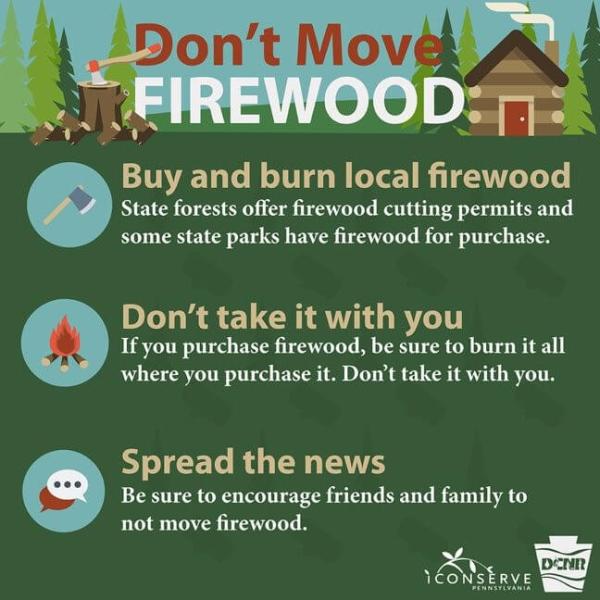Firewood
Firewood movement is a major pathway for the introduction of invasive pests, most likely insects and pathogens, to new ecosystems. Such pests can hide in firewood processed from healthy or diseased trees. Invasive pests can burrow into trees that then become firewood. Many insect pests can survive in firewood, some for more than three years. When the firewood moves, the pests move without the transporter knowing to uninfested areas. Untreated firewood can also harbor other types of insects and diseases that can greatly harm trees and shrubs. Most invasive insects only can travel a few miles on their own, but they can be moved hundreds of miles in or on firewood.
Remember to source your firewood locally! Definitions of local firewood vary as “local” firewood is not a defined or consistent term. Firewood regulations throughout the country vary; state regulations are most often either defined as a set distance (typically 10, 25, or 50 miles) or as a specified geographical area defined by a county, state, or regulated area. Unfortunately figuring out where to buy firewood, varies greatly by region. Some state Departments of Forestry or Agriculture maintain an online directory of approved dealers. Twelve states list their vendors on Firewood Scout, a cooperative firewood vendor locating website. See Find Firewood Near You (Stacked.camp), which is a community-focused project created by avid campers that gives folks access to a user-generated firewood map which shows reliable places to find firewood. Unfortunately, some states and areas have no online information.

Image created by Minnesota Department of Agriculture and Shared, with permission, by Maine Department of Agriculture, Conservation and Forestry on October 7, 2021 via Facebook.
Learn how to help stop invasive pests from the Hungry Pests [aphis.usda.gov] outreach campaign.
See related resources: What You Can Do and How They Spread.
Spotlights
Selected Resources
The section below contains highly relevant resources for this subject, organized by source.
